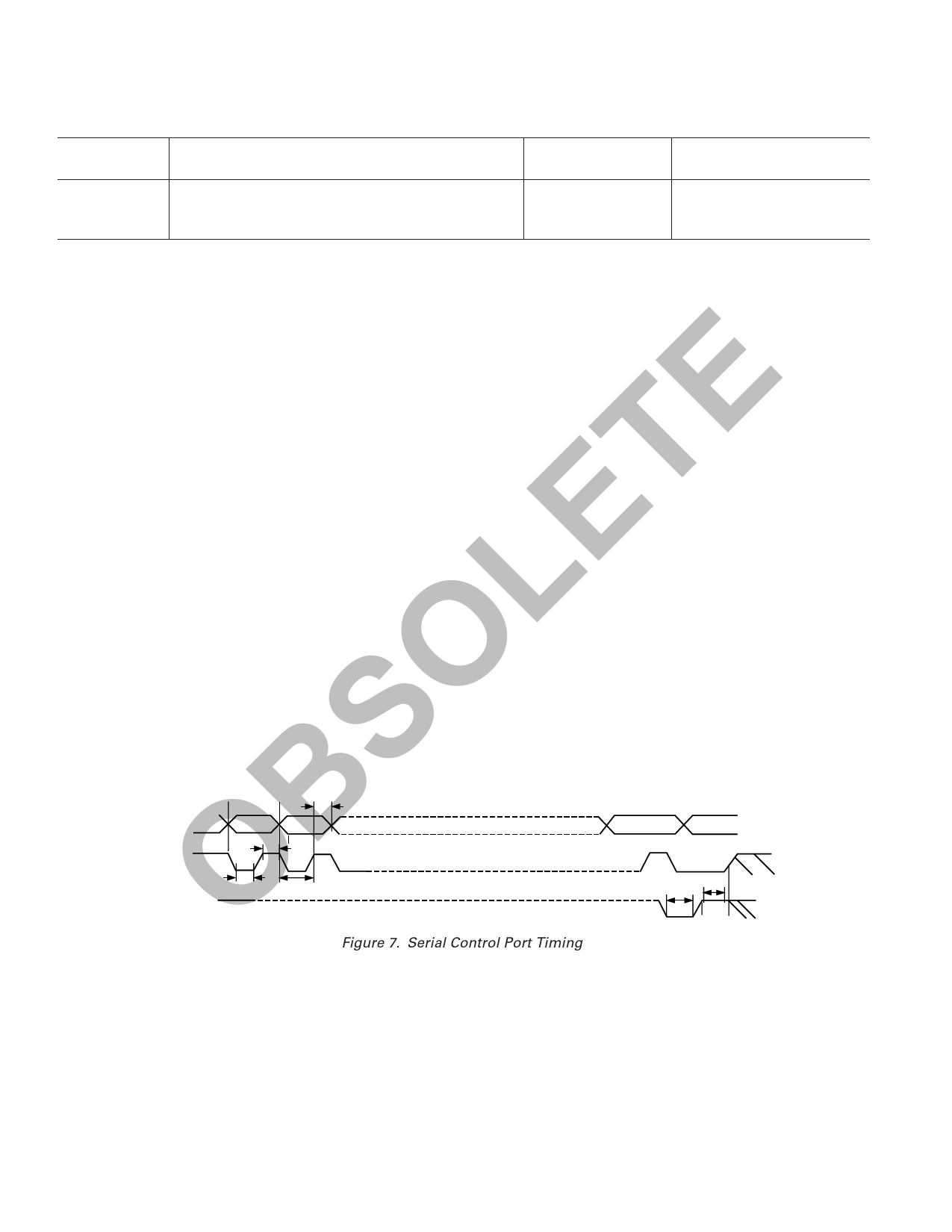AD1853 View Datasheet(PDF) - Analog Devices
Part Name
Description
Manufacturer
AD1853 Datasheet PDF : 16 Pages
| |||

AD1853
Chip Mode
INT8× Mode
INT4× Mode
INT2× Mode
Table II.
Allowable Master Clock Frequencies
256 × FS, 384 × FS, 512 × FS, 768 × FS, 1024 × FS
128 × FS, 192 × FS, 256 × FS, 384 × FS, 512 × FS
64 × FS, 96 × FS, 128 × FS, 192 × FS, 256 × FS
Nominal Input
Sample Rate
48 kHz
96 kHz
192 kHz
Internal Sigma-Delta
Clock Rate
128 × FS
64 × FS
32 × FS
In this mode, it is the responsibility of the DSP to ensure that
CLATCH is used internally to latch the parallel data from the
the left data is transmitted with the first LRCLK pulse, and that serial-to-parallel converter. This rising edge should be aligned
synchronism is maintained from that point forward.
with the falling edge of the last CCLK pulse in the 16-bit frame.
Note that the AD1853 is capable of a 32 × FS BCLK frequency
“packed mode” where the MSB is left-justified to an L/RCLK
transition, and the LSB is right-justified to the opposite L/RCLK
transition. L/RCLK is HI for the left channel, and LO for the
right channel. Data is valid on the rising edge of BCLK. Packed
mode can be used when the AD1853 is programmed in right-
E justified or left-justified mode. Packed mode is shown is Figure 5.
Master Clock Auto-Divide Feature
The AD1853 has a circuit that autodetects the relationship
T between master clock and the incoming serial data, and inter-
nally sets the correct divide ratio to run the interpolator and
modulator. The allowable frequencies for each mode are shown
above.
E Serial Control Port
The AD1853 serial control port is SPI-compatible. SPI (Serial
Peripheral Interface) is an industry standard serial port protocol.
L The write-only serial control port gives the user access to: select
input mode, soft reset, soft de-emphasis, channel specific at-
tenuation and mute (both channels at once). The SPI port is a
3-wire interface with serial data (CDATA), serial bit clock
(CCLK), and data latch (CLATCH). The data is clocked
O into an internal shift register on the rising edge of CCLK.
The serial data should change on the falling edge of CCLK and
be stable on the rising edge of CCLK. The rising edge of
The CCLK can run continuously between transactions.
The serial control data is 16-bit MSB first, and is unsigned. Bits
0 and 1 are used to select 1 of 3 registers (control, volume left,
and volume right). The remaining 14 bits (bits 15:2) are used to
carry the data for the selected register. If a volume register is
selected, then the upper 14 bits are used to multiply the digital
input signal by the control word, which is interpreted as an
unsigned number (for example, 11111111111111 is 0 dB, and
01111111111111 is –6 dB, etc.). The default volume control
words on power-up are all 1s (0 dB). The control register only
uses bits 11:2 to carry data; the upper bits (15:12) should al-
ways be written with zeroes, as several test modes are decoded
from these upper bits. The control register defaults on power-up
to 8× interpolation mode, 24-bit right-justified serial mode,
unmuted, and no de-emphasis filter. The intent with these reset
defaults is to enable AD1853 applications without requiring the
use of the serial control port. For those users that do not use the
serial control port, it is still possible to mute the AD1853 output
by using the MUTE pin (Pin 23) signal.
Note that the serial control port timing is asynchronous to the
serial data port timing. Changes made to the attenuator level
will be updated on the next edge of the LRCLK after CLATCH
write pulse as shown in Figure 6.
S CDATA
B CCLK
O CLATCH
D15
t CCH
t CHD
D14
t CCL
t CSU
D0
tCLL tCLH
Figure 7. Serial Control Port Timing
–8–
REV. A